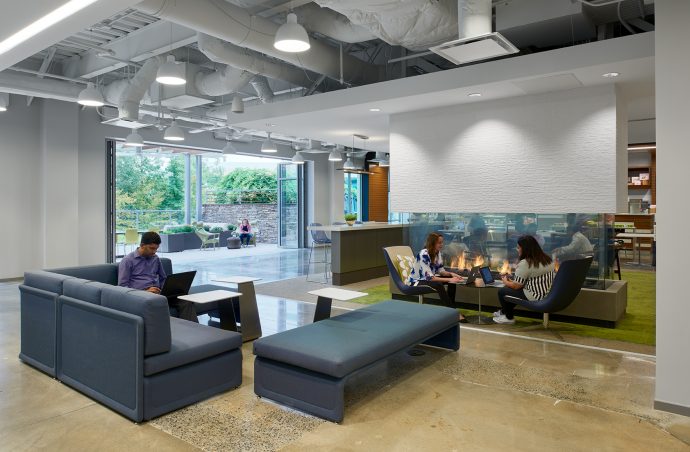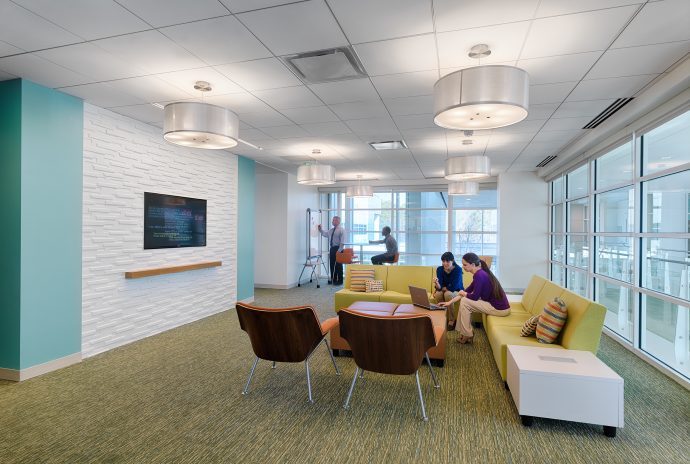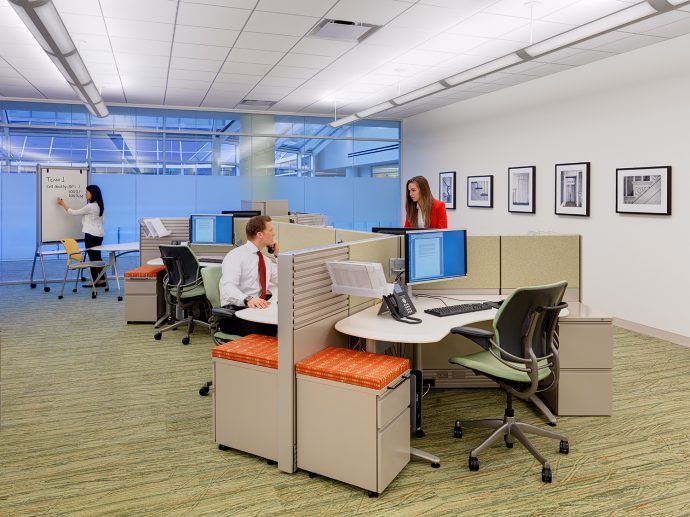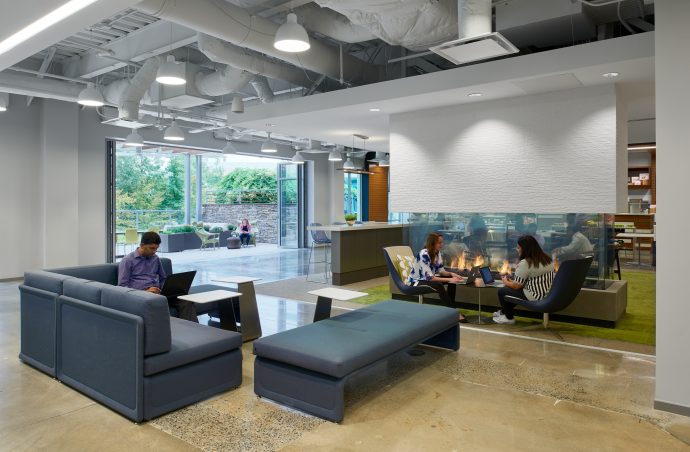This is the second installment of a bimonthly series on the growth, value and future of Design for People. The intent is to explore and discover the impact of behaviors, habits and patterns of people in the design of environments. Find the first article here.

In the first article for this series, the focus was on the concept of behavioral design—or more specifically, design as it relates to workplace behavior. In particular, the message emphasized how important behavioral design is to workplace architecture. Recent studies confirm the direct impact behavioral design has on people’s lives, wellbeing, and on the quality of their interactions. As individuals continue to transition from a fully assigned work environment to a more behaviorally focused and agile space, design value is achieved once sentiments, fears, and expectations are acknowledged and addressed. For example, measuring how space is allocated against how space is used can fill change gaps in order to build design results consistent with observation. Equipped with the knowledge that where employees are stationed affects the way they think, the focus now moves to the “how-to” of behavioral design—methods for making it work.
What drives transformation?
Design for behaviors comes from knowing the conditions that drive the need for a shift in workplace design. These conditions come from three sources. First, and perhaps most surprising, are the analytics showing that less than half of those at work who reside in personally assigned cubicles can actually be found at their desks. Stated differently, observations indicate that possibly as few as 10 percent of assigned cubicle residents spend 90 percent or more of their work week at their desks. No longer are employees bound to their workstations. Because of the recent advances in mobile technology, cubicles and offices are generating less and less value for businesses.

The second condition prompting design for behaviors deals with the reality of very low employee engagement in the workplace. Gallup, an international polling organization, has tracked this for the United States since 2000. The company’s surveys reveal employee engagement has barely budged in well over a decade. According to Gallup Daily Tracking, only 32 percent of U.S employees are engaged in their jobs and workplaces. Many report that this comes as a result of the hectic and often unpredictable nature of the workplace environment. Ultimately, low engagement can create negative actions toward productivity and negative attitudes toward organizational culture.
The third rationale that explains why work behavior design is reinventing itself is due to the increasing complexity of the workplace. For at least the last 50 years, employees were generally assigned work that was much more rote-and-response driven than is called for today. An employee had a skill set that worked to solve specific sets of tasks. Many employees worked solo. As a result, companies developed systems that lent naturally to a cubicle-intensive environment that fulfilled plug-and-play work behaviors. Now, work is largely people-problem driven, which tends to require more time and interaction when it comes to solving problems and building systems. Collaboration is at the heart of creative talent, and designers are catering to behavioral design accordingly.
Fear-based challenges
There are many merits to designing with behavioral change in mind. However, to design this way, before attempting to use knowledge of behaviors to transform work environments, first it helps to understand employees’ fears, uncertainties, and doubts. Some of the most common sentiments embodying this apprehension include:
- “I need a place to call my own.”
- “I need a place to put my things.”
- “I need to be able to find the people I need.”
- “I need a door for privacy and confidentiality.”
- “I need to belong to the office.”
One common theme among these five statements is where the emphasis is placed: on the personal needs of the individual. This is very natural; employees believe they must look out for themselves. Another shared sentiment is that each message indicates a loss of control. Although employees define “control” differently—depending upon their status at an organization—being in control over at least the basics (like where to put one’s things) must count for something. Finally, all five reactions come from to memories of former fixed and assigned workplaces that are still perceived as having value. Why? Given the chance, most people tend to fall back on what is familiar from the past.

This list of sentiments is telling. Behavioral design benefits from carefully and considerately restating individuals’ expectations in a changing workplace. Anticipate that disruption will occur as a result of the transition—especially when the difference is as dramatic as changing from a fixed or traditional office or workplace to one more behaviorally flexible. Changes in behavioral design require using one’s imagination to envision new ways of working in dynamic work settings. It is through imagining new work expectations and processes that employees can reset their perceptions and judgments toward behavioral design. For that reason, it is important to invest the time and learn the value of aligning memory of past workspaces to new visions of how work will be produced moving forward. In the end, more advanced work behaviors may evolve that have the potential to increase utilization, stimulate engagement, and reset disappointed expectations about adapting to a new workplace.
Supporting behavior by design
Recognizing the connection between space and human behavior, companies like Google, Intel, and Cisco are spending millions on redesigning buildings, knocking down walls, and rearranging conference rooms. For example, since the perceived value for increased collaboration has been driving design trends, awareness of perceptions and judgments from the employees involved in the process seem to accelerate change acceptance. Being engaged in the behavioral design process helps employees move beyond deterrents and closer to acceptance.
One tactic in supporting behavioral change through design involves how the news of the imminent design change is delivered—explaining each step as it occurs—in real time. Making sure the key stakeholders stay abreast of the what, when, and whys of a changing workplace empowers teams. Another approach for supporting a staff in transition is reassurance. Making certain that everyone sees the positive vision behind designs for new behaviors goes a long way toward easing the pain of a transition. Another way to relieve transitional stress comes from helping employees envision what success in this new environment might look like.
Last but not least, one straightforward way of igniting employees’ imaginations is with storytelling. The reasons why workplaces are underutilized, why engagement continues to be low, and why the complexity of work continues to increase are best discovered and understood through the story of people who are working. Behavioral design can benefit from the power of, “Once upon a time” and “Happily ever after”.

Modern workplace makeover
Modern workplace makeovers are a fact of life. It’s taken plenty of time, but the workplace is now becoming far less individualized. The traditional systems and beliefs that standard cubicles and offices propagated for so long are being shed and replaced with behavioral design standards that favor collaboration. As the sophistication and value of this trend increase to better align with employees’ work behaviors, transitional tactics will continue to be developed to support and ease the changeovers. Keep in mind: the best behavioral designs will not only encourage teamwork and boost engagement, but they will do so with transparency—while simultaneously catering to a human’s capacity for imagination.


